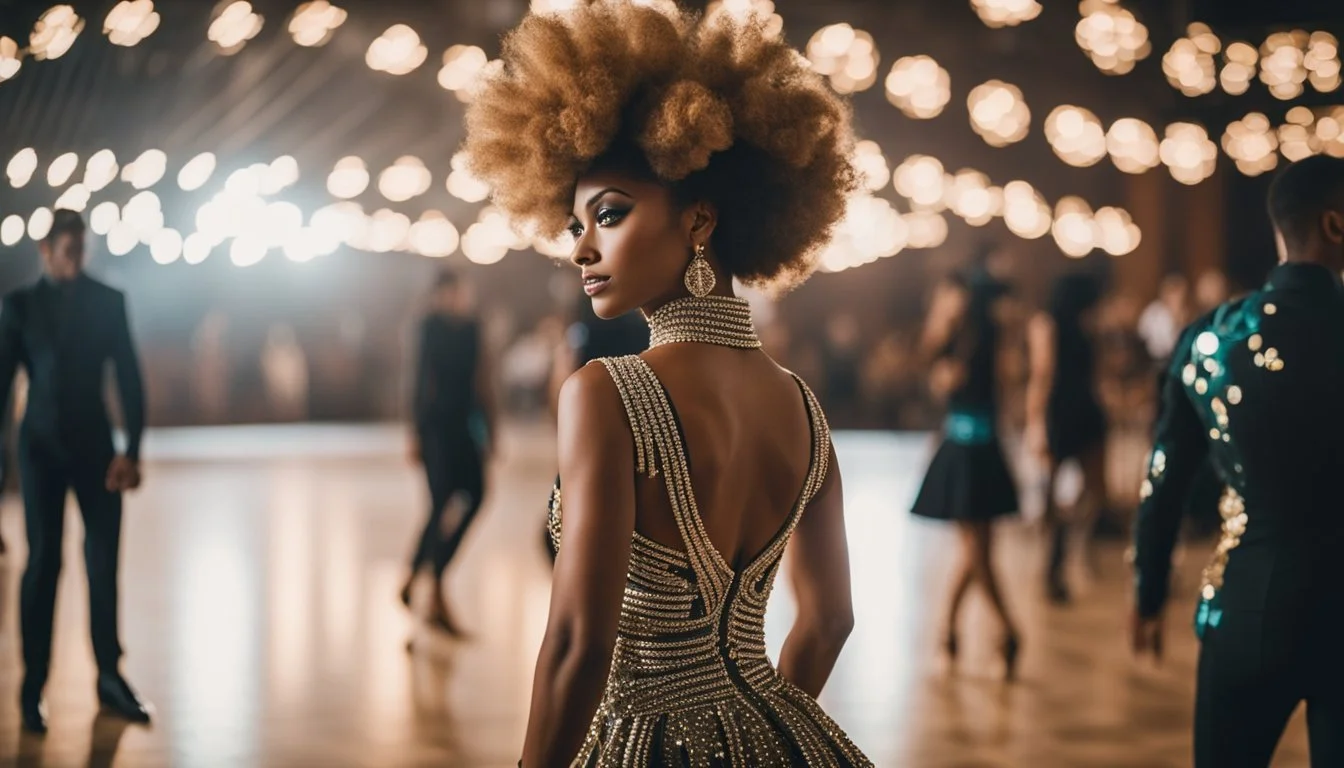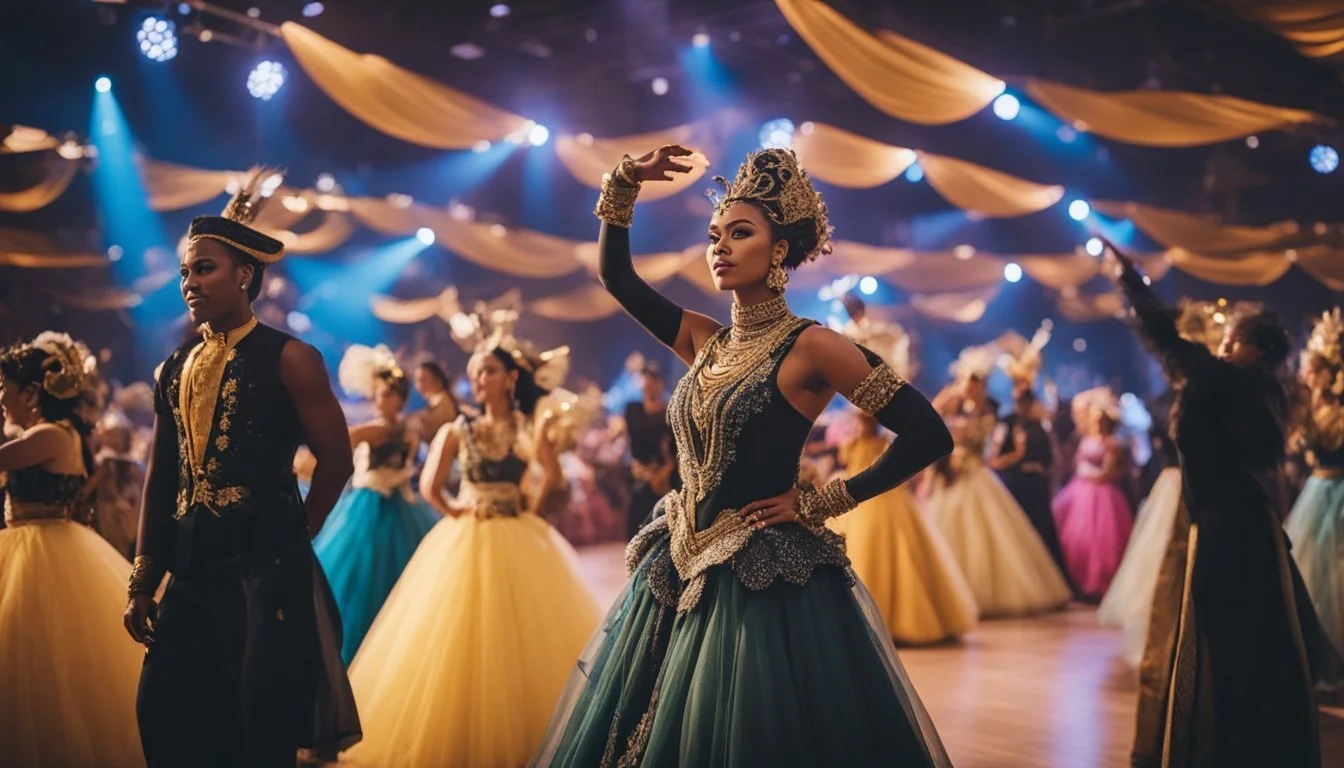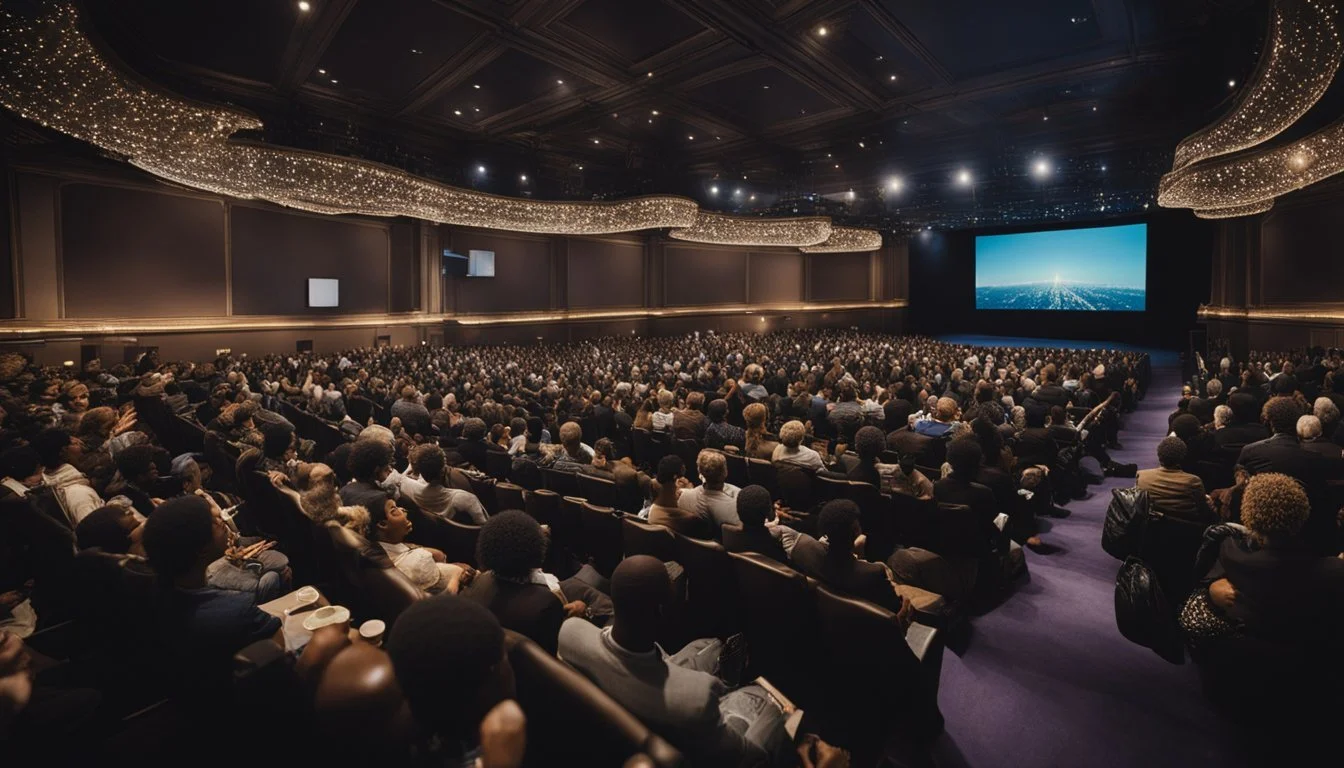Paris Is Burning Documentary Sparks Debate on Cultural Ownership and Legacy
Paris Is Burning, the groundbreaking 1990 documentary, thrust New York's vibrant ballroom culture into the mainstream spotlight. The film captured the lives of LGBTQ+ individuals, primarily Black and Latino, who found refuge and self-expression in the city's underground drag ball scene. While celebrated for its raw portrayal of a marginalized community, Paris Is Burning sparked debates about cultural ownership and exploitation that continue to this day.
The documentary's widespread acclaim and influence on popular culture raised questions about who benefits from showcasing marginalized communities. Critics argue that director Jennie Livingston, as an outsider, profited from the stories of vulnerable individuals without adequately compensating them. Supporters contend that the film gave voice to an often-silenced community and preserved an important cultural moment.
This ongoing debate highlights the complex relationship between documentarians and their subjects, especially when dealing with marginalized groups. It challenges viewers to consider the ethics of representation and the potential consequences of bringing subcultures into the mainstream. The legacy of Paris Is Burning serves as a reminder of the power of media to both celebrate and potentially exploit unique cultural expressions.
Historical Context and Emergence of Ball Culture
Ball culture originated in the late 19th century and evolved into a vibrant underground scene in New York City. It provided a space for LGBTQ+ individuals, particularly those of color, to express themselves freely through dance, fashion, and performance.
Origins of the Ballroom Scene
The roots of ball culture trace back to 1869 in Harlem's Hamilton Lodge. These early drag balls were crucial in fostering LGBTQ+ culture. They offered a rare opportunity for gay men and transgender individuals to gather openly and celebrate their identities.
As the 20th century progressed, these events became more elaborate and competitive. Participants organized themselves into "houses," which functioned as chosen families and competitive units.
The balls featured categories like "realness" and "executive realness," where contestants were judged on their ability to pass as straight or wealthy in everyday life.
The Influence of Harlem and New York City
Harlem played a pivotal role in shaping ball culture. The neighborhood's rich artistic heritage and diverse community provided fertile ground for creative expression.
New York City's unique mix of cultures and its reputation as a haven for marginalized groups fueled the scene's growth. The city's thriving gay subculture and drag traditions merged with elements of African American and Latino cultures.
This fusion gave rise to new forms of dance, including voguing. The style drew inspiration from fashion magazine poses and ancient Egyptian hieroglyphs.
1980s: A Cultural Phenomenon
By the 1980s, ball culture had evolved into a full-fledged phenomenon. The AIDS crisis heightened the importance of these events as safe spaces for the LGBTQ+ community.
Balls became more frequent and elaborate, with participants competing in an expanding array of categories. The scene's influence began to extend beyond its original boundaries.
Madonna's 1990 hit "Vogue" brought elements of ball culture into the mainstream. This exposure sparked debates about cultural appropriation and ownership that continue to this day.
Documentary Overview
Paris Is Burning captures the vibrant ballroom culture of 1980s New York City. The film explores the lives of LGBTQ+ individuals, particularly Black and Latino drag queens and transgender women, as they compete in elaborate balls and navigate societal challenges.
Jennie Livingston's Vision
Jennie Livingston's documentary approach blends observational footage with intimate interviews. She spent years immersing herself in the ballroom scene, gaining trust and access to key figures. Livingston's camera captures the glamour and spectacle of the balls while also revealing the harsh realities faced by participants outside the ballroom.
The film showcases the creativity and resilience of its subjects. It highlights the concept of "realness" - the ability to pass as straight or cisgender in everyday life. Livingston's vision extends beyond the surface, delving into themes of gender, race, and class.
Key Personalities and Their Narratives
Paris Is Burning introduces viewers to several memorable characters who shape the narrative:
Willi Ninja: The self-proclaimed "mother of the House of Ninja" and a talented voguer.
Pepper LaBeija: A legendary drag queen and house mother.
Venus Xtravaganza: A young transgender woman with dreams of a "normal" life.
Dorian Corey: A veteran drag queen who offers insightful commentary.
Octavia St. Laurent: An aspiring model who embodies the pursuit of fame.
Freddie Pendavis: A young man navigating his identity and place in the community.
These individuals share their experiences, hopes, and struggles. Their stories provide a window into the complexities of ballroom culture and the challenges faced by LGBTQ+ people of color in 1980s New York.
Cultural Significance and Practices
"Paris Is Burning" shines a spotlight on the vibrant ballroom culture of 1980s New York City. This subculture gave rise to unique art forms, linguistic innovations, and alternative family structures within the LGBTQ+ community.
Vogue and the Art of Performance
Voguing emerged as a distinctive dance style in the ballroom scene. Characterized by angular poses and fluid movements, it draws inspiration from fashion magazine poses and ancient Egyptian hieroglyphs. Performers showcase their "fierceness" through precise hand gestures, dramatic spins, and gravity-defying dips.
Balls serve as the competitive arena for voguing. Participants walk in various categories, demonstrating their ability to embody different personas and aesthetics. The concept of "realness" plays a crucial role, challenging contestants to convincingly portray specific roles or archetypes.
Judges evaluate performers based on criteria such as execution, creativity, and overall presentation. Winning a ball bestows prestige and recognition within the community.
The Language of Ballroom
Ballroom culture developed its own rich lexicon, contributing numerous terms to mainstream vernacular. "Reading" involves the witty critique of another person's flaws, while "shade" refers to subtle insults or dismissive behavior.
Other notable linguistic contributions include:
"Serving" (presenting oneself in a particular manner)
"Gagging" (being impressed or shocked)
"Snatched" (looking exceptionally good)
This unique vocabulary fostered a sense of belonging and identity among community members. It also provided a coded language for communication in potentially hostile environments.
Houses and Family Structures
Houses form the backbone of ballroom culture, functioning as chosen families for many LGBTQ+ individuals. Led by "mothers" and "fathers," these groups offer support, mentorship, and a sense of belonging to members who may face rejection from their biological families.
House names often reference fashion designers or luxury brands, such as House of LaBeija or House of Xtravaganza. Members adopt their house name as a surname, solidifying their place in this alternative kinship system.
Houses compete against each other at balls, fostering a spirit of friendly rivalry and pushing members to excel in their chosen categories. This structure provides a framework for personal growth, artistic expression, and community building within the ballroom scene.
Themes of Identity and Expression
"Paris Is Burning" explores complex themes of identity and self-expression through the lens of New York City's ball culture. The film delves into the intersections of gender, sexuality, race, and class.
Exploring Gender and Sexuality
The documentary showcases the vibrant world of drag balls, where participants express diverse gender identities and sexualities. Gay men and transgender women take center stage, embodying both masculine and feminine personas through their performances.
Drag queens and transgender performers challenge traditional gender norms, creating spaces for self-expression and acceptance. The film highlights the importance of "realness" - the ability to pass as a gender or social class different from one's own.
The ball scene provides a safe haven for LGBTQ+ individuals to explore and celebrate their identities. It offers a glimpse into the complexities of gender performance and the fluidity of sexuality within this subculture.
Race and Intersectionality
"Paris Is Burning" prominently features African American and Latinx LGBTQ+ individuals, shedding light on the intersections of race, sexuality, and gender identity. The ball culture serves as a refuge for marginalized communities facing multiple forms of discrimination.
The film explores how participants navigate racial identity within the predominantly white mainstream gay culture. It reveals the unique challenges faced by queer people of color, including racism within LGBTQ+ spaces.
Contestants in the balls often emulate white, upper-class ideals, highlighting the complex relationship between race, aspiration, and societal standards of beauty and success.
The Quest for the American Dream
The documentary portrays the ball scene as a microcosm of the broader American Dream. Participants strive for fame, recognition, and social mobility within their community.
Many characters express desires for conventional success - wealth, status, and acceptance. The film shows how the ball culture creates alternative pathways to achieve these aspirations for individuals often excluded from mainstream opportunities.
However, "Paris Is Burning" also reveals the harsh realities faced by its subjects, including poverty, discrimination, and health challenges. It portrays both the allure and the limitations of pursuing the American Dream for marginalized communities.
Impact on Popular Culture
"Paris Is Burning" profoundly shaped popular culture, influencing music, fashion, and media representation. Its impact extended far beyond its initial release, sparking conversations about LGBTQ+ rights and identity.
Madonna, 'Vogue', and Beyond
Madonna's hit song "Vogue" drew inspiration from the ballroom scene depicted in "Paris Is Burning." The dance style and aesthetic popularized by the film became a global phenomenon. Madonna's appropriation of voguing sparked debates about cultural ownership and recognition.
The film's influence extended to other artists and performers. Drag culture gained mainstream visibility, with references to the documentary appearing in music videos, stage performances, and fashion shows.
Mainstream Media and Representation
"Paris Is Burning" challenged traditional media portrayals of LGBTQ+ individuals. It provided a platform for marginalized voices, particularly those of transgender women and people of color. The film's success led to increased representation of drag and ballroom culture in television and film.
Shows like "RuPaul's Drag Race" and "Pose" drew inspiration from the documentary, bringing ballroom culture to wider audiences. These productions employed actors and consultants from the ballroom community, ensuring authentic representation.
The Legacy and Preservation
The Library of Congress added "Paris Is Burning" to the National Film Registry in 2016, recognizing its cultural significance. This preservation ensures future generations can access and study the film's portrayal of 1980s ballroom culture.
The documentary continues to be screened at film festivals and educational institutions. It serves as a vital historical record of LGBTQ+ life in New York City during the AIDS crisis.
The ballroom community featured in the film has evolved, with many participants becoming activists and educators. Their ongoing work keeps the spirit of "Paris Is Burning" alive, influencing new generations of LGBTQ+ individuals and allies.
Controversies and Criticisms
The release of "Paris Is Burning" sparked intense debates about representation, cultural ownership, and ethical filmmaking practices. These discussions continue to shape how the documentary is viewed and interpreted today.
Exploitation vs. Celebration
Critics questioned whether "Paris Is Burning" celebrated or exploited its subjects. Some argued the film provided valuable visibility to marginalized communities. Others saw it as profiting from their struggles without adequate compensation.
The participants received minimal payment for their involvement. This raised concerns about the ethics of documenting vulnerable populations. The film's commercial success further complicated matters, as its subjects saw little financial benefit.
Questions arose about who has the right to tell marginalized stories. The documentary's widespread popularity led to increased mainstream exposure of ballroom culture. This prompted discussions on cultural appropriation and the commodification of LGBTQ+ experiences.
The Outsider Perspective
Jennie Livingston's position as a white, lesbian filmmaker documenting predominantly Black and Latinx ballroom performers drew scrutiny. Critics debated whether an outsider could accurately represent the community's experiences.
Some praised Livingston's approach, noting her efforts to build trust with participants. Others argued her perspective inherently skewed the narrative. The film's framing and editing choices came under examination for potential bias.
Discussions emerged about the power dynamics between documentarian and subject. Questions of consent and representation became central to the discourse. The debate highlighted broader issues of who gets to shape cultural narratives in media.
The Ethical Dilemmas of Representation
"Paris Is Burning" raised complex questions about the ethics of representation in documentary filmmaking. The film's voyeuristic elements sparked debates about the line between documentation and exploitation.
Critics pointed out potential issues of consent, particularly regarding the film's more intimate scenes. The documentary's portrayal of poverty, illness, and violence among its subjects drew both praise and criticism.
Concerns arose about reinforcing stereotypes or feeding into existing prejudices. Some worried the film might inadvertently expose its subjects to further discrimination or danger. These discussions highlighted the responsibility filmmakers bear when depicting marginalized communities.
Modern Evolution and Adaptations
'Paris Is Burning' continues to shape contemporary culture, influencing art, media, and the ballroom scene. Its impact reverberates through various creative expressions and communities.
The Ongoing Influence on Arts and Media
'Paris Is Burning' has left an indelible mark on popular culture. The film's portrayal of voguing sparked a dance revolution, inspiring artists like Madonna and influencing music videos, fashion shows, and contemporary dance performances.
Television shows like 'Pose' and 'Legendary' draw direct inspiration from the documentary, bringing ballroom culture to wider audiences. These productions showcase the artistry, resilience, and creativity of LGBTQ+ communities of color.
The film's exploration of gender identity and expression continues to resonate in modern discussions of gender fluidity and nonconformity. It has become a touchstone for academic studies on queer theory and representation in media.
Current State of the Ballroom Scene
New York City's ballroom scene has evolved since the film's release, adapting to changing social landscapes. The community has expanded globally, with balls now held in cities worldwide.
Ballroom culture has become more visible in mainstream spaces, leading to increased opportunities for performers and artists from the scene. Voguing classes are now offered in dance studios, bringing the art form to diverse audiences.
The scene continues to provide a safe space for LGBTQ+ individuals, particularly transgender and gender-nonconforming people of color. Modern balls often incorporate themes addressing current social issues, maintaining the tradition of political engagement through performance.
Digital platforms have transformed how the community connects, with social media allowing for wider reach and new forms of expression. Virtual balls gained popularity during the COVID-19 pandemic, demonstrating the scene's adaptability.
Personal Accounts and Interviews
The individuals featured in "Paris Is Burning" provide raw, honest perspectives on their lives and experiences. Their words offer intimate glimpses into the ballroom scene and the challenges faced by LGBTQ+ people of color in 1980s New York City.
The Voices of Icons
Venus Xtravaganza, a transgender performer, shares her dreams of living as a "rich, white woman" in the suburbs. Her candid interviews reveal the complex intersections of race, gender, and class within the ballroom community.
Pepper LaBeija, a legendary house mother, discusses the importance of chosen families for LGBTQ+ youth rejected by their biological relatives. LaBeija's insights highlight the nurturing role of house mothers in the ballroom scene.
Dorian Corey, a veteran drag queen, offers wisdom on the art of female impersonation and the evolving nature of ballroom culture. Corey's reflections provide historical context for the documentary's younger participants.
Experiences of Marginalization
Many interviewees describe facing discrimination in housing, employment, and healthcare due to their gender identity or sexual orientation. These accounts shed light on the systemic barriers encountered by transgender and gender-nonconforming individuals.
Several performers discuss resorting to sex work or theft to survive, highlighting the limited economic opportunities available to LGBTQ+ people of color in 1980s New York.
Interviews with young ballroom participants reveal the emotional toll of family rejection and societal stigma. Their stories underscore the vital support network provided by the ballroom community.
Conclusion
'Paris Is Burning' remains a complex and controversial documentary. It brought ballroom culture to mainstream attention, showcasing the creativity and resilience of LGBTQ+ communities of color in New York.
The film's impact on popular culture is undeniable. It inspired artists and educated audiences about a vibrant subculture previously hidden from view.
However, questions of cultural ownership and exploitation persist. Critics argue the film profited from marginalized communities without adequate compensation or control over their stories.
Supporters contend that 'Paris Is Burning' provided a valuable outlet for voices often silenced. It fostered understanding and appreciation for ballroom culture among wider audiences.
The debate highlights the importance of trust and care when documenting marginalized communities. It raises crucial questions about who has the right to tell certain stories and profit from them.
Ultimately, 'Paris Is Burning' serves as both a celebration and a cautionary tale. It demonstrates the power of representation while underscoring the need for ethical considerations in documentary filmmaking.







